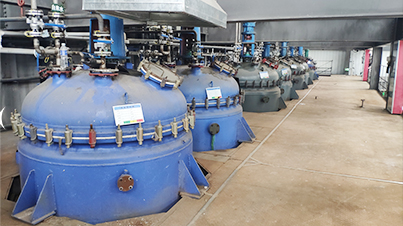coagulant flocculant
Understanding Coagulants and Flocculants A Key to Effective Water Treatment
Water treatment is essential in ensuring safe and clean water supply, particularly in areas affected by pollution and industrial waste. Two critical components in the water treatment process are coagulants and flocculants, which play a pivotal role in the removal of suspended solids and impurities from water. Though they are often used interchangeably, coagulants and flocculants serve different functions and understanding their roles is crucial for effective water treatment processes.
Coagulants The First Step in Water Clarification
Coagulants are chemical agents that facilitate the aggregation of small particles in a liquid. When added to water, they neutralize the charge that keeps these particles separate, promoting the formation of larger aggregates, or flocs. This process is known as coagulation. Common coagulants include aluminum sulfate (alum), ferric chloride, and polyaluminum chloride.
The effectiveness of a coagulant depends on several factors, including pH, temperature, and the nature of the impurities present in the water. For instance, alum works best in slightly acidic conditions, while ferric chloride is more effective in neutral or slightly alkaline environments. The added coagulants bind with the suspended particles, allowing them to clump together and form larger, heavier clusters that can be easily removed from the water.
One of the most significant benefits of using coagulants is their ability to reduce the turbidity of water, which is a measure of how clear the water is. High turbidity often indicates the presence of harmful microorganisms, organic substances, and heavy metals. By utilizing coagulants, water treatment facilities can significantly improve water quality, making it safe for consumption and ecological balance.
Flocculants Enhancing the Coagulation Process
coagulant flocculant

While coagulants initiate the process of sedimentation by forming flocs, flocculants enhance this process further. Flocculants are polymers that cause the flocs created during coagulation to agglomerate into larger masses, known as flocs, which settle faster and can be separated more easily. Common types of flocculants include polyacrylamides and natural polysaccharides.
The addition of flocculants is crucial in processes where rapid sedimentation is required. In many water treatment plants, the coagulation and flocculation processes occur in sequence, ensuring that the removal of suspended solids is efficient and effective. The use of flocculants not only accelerates sedimentation but also allows for the recovery and reuse of valuable resources, such as water and certain minerals, further promoting sustainability in water management systems.
Applications and Environmental Considerations
Coagulants and flocculants find applications in various industries beyond water treatment, including mining, paper production, and food processing. However, their use raises environmental concerns, particularly regarding the residual chemicals that may be left in treated water. It is crucial for water treatment facilities to monitor and adjust the dosages of these chemicals to minimize adverse effects on ecosystems.
Moreover, there is an ongoing movement towards using more environmentally friendly alternatives, such as bio-flocculants derived from natural sources. These offer a sustainable approach to treating water while reducing the risks associated with chemical additives, balancing efficiency with ecological responsibility.
Conclusion
The effective use of coagulants and flocculants is vital in maintaining water quality and addressing the myriad challenges associated with water pollution. By understanding the unique roles of these agents, water treatment professionals can optimize their processes, ensuring cleaner water for municipalities and industries. As environmental concerns mount, the water treatment industry must embrace innovative solutions that prioritize both effectiveness and sustainability, paving the way for a healthier planet.
-
Pbtc Scale InhibitorPBTC: A Scale Protector for Industrial Water TreatmentNewsAug.05,2025
-
Organic Phosphonate: An Efficient Defender in the Field of Scale InhibitionNewsAug.05,2025
-
Hydrolyzed Polymaleic Anhydride: Green Pioneer in Scale Inhibition FieldNewsAug.05,2025
-
PAPEMP Polyamino Polyether Methylene Phosphonic Acid For SaleNewsAug.05,2025
-
Flocculant Water Treatment: A Pioneer in Purification in the Field of Water TreatmentNewsAug.05,2025
-
Benzyl Isothiazolinone: An Efficient and Broad-Spectrum Antibacterial Protective GuardNewsAug.05,2025





